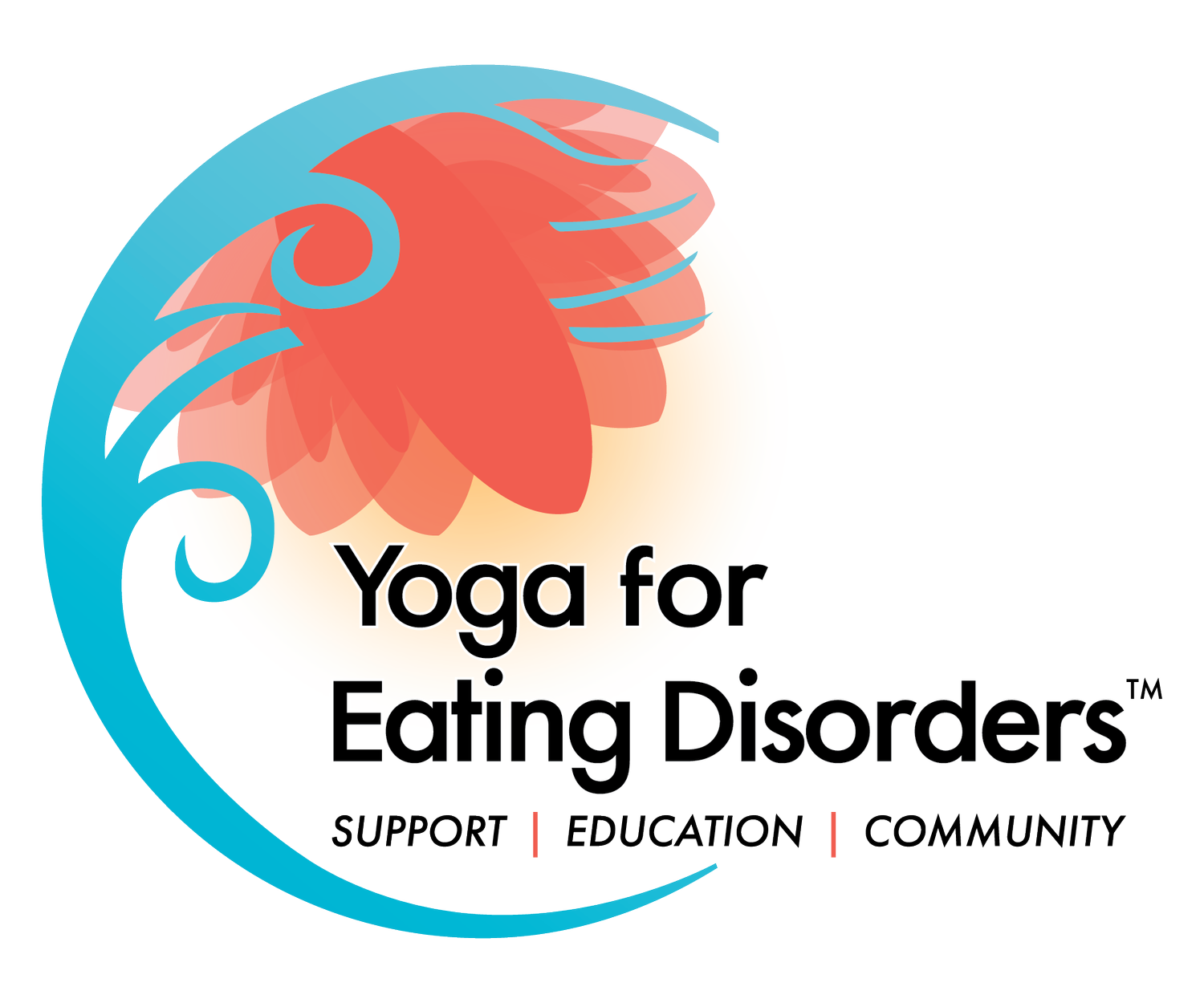Removing Diet Culture and Competition from Yoga
By Ashley Paige, Yoga for Eating Disorders Writer
As a yoga teacher, it’s very fulfilling to create a nurturing space for students to relax, restore, and recalibrate. Which is why I’ve always found it interesting when some students seem to have this urge to defend themselves before class starts.
I recently taught my first class since the start of the pandemic and a student immediately turned the conversation into an explanation for why she wouldn’t be able to do headstand that day (I had no intention of teaching headstand to a new student). She lamented, “Normally I am a devoted practitioner, but lately I’ve been traveling, have gained weight, have been eating carbs...” And that’s when my diet culture radar went off.
When we are entrenched in diet culture, our brains tend toward people-pleasing, body blaming, perfectionism, and black and white thinking. It’s a shame to see that diet culture is so pervasive that it’s even infiltrated yoga.
This is just one of many similar sounding conversations I’ve often had before or after teaching a class. Some students seem to arrive on their mat with the idea that they’re there to perform and are afraid of disappointing the teacher. If they consider their ability to be less-than they feel the need to justify it with an explanation. To help these students (and all of us) release the attachment they have to others’ opinions, the yamas and niyamas, particularly aparigraha, or letting go, can be very helpful.
Aparigraha supports the belief that our bodies are good regardless of how they look or what they can do. When a teacher offers cues such as, ‘If it’s available to you’, or ‘If you can’t’, students are likely to blame their body for falling short of an unattainable ideal. This kind of language creates a hierarchy of abilities, turning yoga into a competitive sport. Yoga is a journey of self-discovery, not competition.
Striving for an ideal goes against the practice of santosha, or contentment - the belief that we are good enough as we are. Rather than blaming our bodies, santosha asks us to meet ourselves where we are without judgment and without the need to gain or become more than what is right now.
Contentment can be a challenge to practice if a teacher’s language leaves no room for anatomic variability. Alignment is cued like a dogmatic assessment of whether a yogi can reach the ‘fullest expression’ of the pose. Modifications and props have unfortunately gained a negative connotation of being cheats or consolation prizes rather than tools of empowerment. This is why the practice of satya, or truthfulness, teaches us to embrace the ‘imperfections’ and accept things as they are, not as we wish them to be.
The wish for things to be different, or perfect, leads to black and white thinking and causes students to believe they can either be ‘good’ or ‘bad’ at yoga. They way they see it, they’ve either mastered the ashtanga series, or they’re a shameful beginner. Moving away from these extreme ways of thinking and behaving is the practice of brahmacharya, or moderation. It allows us to enjoy the nuances of living in shades of gray.
I’ll never ask anyone to leave parts of themselves outside the yoga space because it’s just the place for introspection and self-study, or svadhyaya. I want my students to feel empowered and safe to show up as their true selves, messy parts and all. I want them to know that what really inspires me is when they take agency over their practice and rest or modify without prompting. I don’t have any expectations for them and they shouldn’t either.
The yoga space should be one that encourages empathy for self and others, and curious awareness without judgment. Only then can we return to the original intention of compassionate self-awareness.
Raised in the suburbs of Philadelphia, Ashley is a yoga instructor and body image coach on the Pacific Southwest coast of Nicaragua. Through her recovery of orthorexia she transitioned from a rigorous asana practice to now healing, accepting, and connecting with her body through yoga philosophy. She’s rediscovering hobbies like psychology, baking, music and art, as well as pursuing new interests such as writing and surfing. She believes her healing journey can support others to overcome their own struggles with body image. Ashley writes for the Yoga for Eating Disorders blog.


